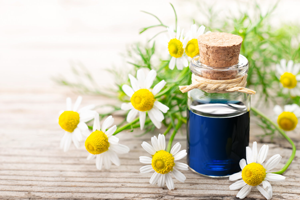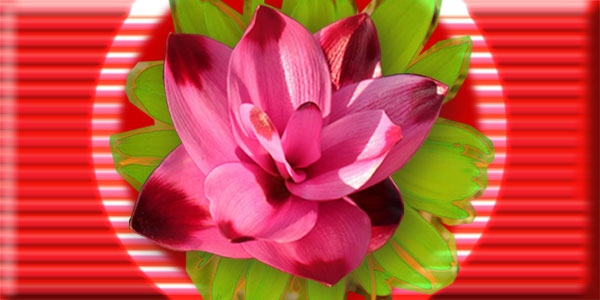Chamomile Noble
Matricaria recutita/German chamomile, Roman chamomile/Chamaemelum nobile – a species of plant from the Asteraceae family. The botanical name chamomile, the common name chamomile, is related to the traditional inclusion of this species in the genus Anthemis chamomile. Basically, two varieties of this plant are used as herbal raw materials: German chamomile (Matricaria recutita/Chamomilla recutita) and noble/Roman chamomile (Chamaemelum nobile/Roman chamomile).
Chamomile (Matricaria chamomilla L.) is one of the most important medicinal herbs found in southern and eastern Europe. It is also grown in Germany, Hungary, France, Russia, Yugoslavia and Brazil. It was introduced to India during the Mughal period and is now cultivated in Punjab, Uttar Pradesh, Maharashtra and Jammu and Kashmir. The plants can be found in North Africa, Asia, North and South America, Australia and New Zealand. Hungary is the main producer of plant biomass. In Hungary, it also grows abundantly on poor soils and is a source of income for the poor inhabitants of these areas. The flowers are exported to Germany in bulk for oil distillation.
Phytochemistry
More than 120 chemical constituents have been identified in chamomile flower, most of them found in the essential oil. Chemical constituents of the essential oil include bisabolol, farnesene, chamazulene, apigenin, quercetin, patuletin, luteolin, and coumarin.
Chamomile - Uses
Chamomile is known as a medicinal plant and herbal raw material, and as a cosmetic plant and raw material. Chamomile has been used in herbal remedies for thousands of years, known in ancient Egypt, Greece and Rome. This herb was considered by the Anglo-Saxons as one of the 9 sacred herbs given to people by the ruler. Chamomile medicine is included in the pharmacopoeia of 26 countries. It is a component of several traditional medicinal preparations, Unani and homeopathy. As a medicine, it is used for flatulence, colic, hysteria and intermittent fever.
Chamomile – Action
 Primarily Roman chamomile flowers (Chamomillae romanae flos) are used - dried flowers with an essential oil content of not less than 7 ml/kg. Chamomile provides a natural essential oil with a blue color, which is due to the presence of sesquiterpenes. Flowers and flower heads are the main organs of essential oil production. It is noteworthy that chamomile flower oil contains mainly sesquiterpene derivatives (75-90%), up to 20% polyines, α-bisabolol (4.8-11.3%), and α-bisabolol oxides A and B, which are known for their anti-inflammatory, antiseptic, antilogistic, and spasmolytic properties. α-bisabolol and chamazulene, resulting from the transformation of matrixin, are more useful than other ingredients. The color of the oil determines its quality. The chamazulene content in various chamomiles depends on the origin and age of the material. It decreases during flower storage.
Primarily Roman chamomile flowers (Chamomillae romanae flos) are used - dried flowers with an essential oil content of not less than 7 ml/kg. Chamomile provides a natural essential oil with a blue color, which is due to the presence of sesquiterpenes. Flowers and flower heads are the main organs of essential oil production. It is noteworthy that chamomile flower oil contains mainly sesquiterpene derivatives (75-90%), up to 20% polyines, α-bisabolol (4.8-11.3%), and α-bisabolol oxides A and B, which are known for their anti-inflammatory, antiseptic, antilogistic, and spasmolytic properties. α-bisabolol and chamazulene, resulting from the transformation of matrixin, are more useful than other ingredients. The color of the oil determines its quality. The chamazulene content in various chamomiles depends on the origin and age of the material. It decreases during flower storage.
It contains, among others, essential oil up to 2.5% (chamazulene, farnesene, pinocarvone, butyl and isoamyl esters of angelic, isobutyric, tiglic and methylacrylic acids), flavonoids, phytosterols, caffeic acid, choline, bitters.
The ingredients have antispasmodic, diuretic, soothing, diaphoretic and calming properties. Used in cases of spasms of the digestive organs, indigestion, lack of appetite, colds, angina, and stomach ulcers. Helpful in neuralgia.
References
- Yun-Lei D, Li Y et al. Chamomile: A Review of Its Traditional Uses, Chemical Constituents, Pharmacological Activities and Quality Control Studies Molecules. 2023 Jan; 28(1): 133.
- Singh O, Khanam Z et al. Chamomile (Matricaria chamomilla L.): An overview Pharmacogn Rev. 2011 Jan-Jun; 5(9): 82–95.
- Mishra B et Chandra M. Evaluation of phytoremediation potential of aromatic plants: A systematic review JARMAP: 31, Dec.2022, 100405
- Kimura R, Schwartz J, et al. A narrative review on the potential therapeutic benefits of chamomile in the acute care setting J.Herbal Med. Vol 41, Sep. 2023, 100714
- Fajemiroye JO, Ferreira NL, et al. Matricaria recutita and its Isolate - Apigenin JPRCP; 6, 4, Oct-Dec 2016, 16-31.






